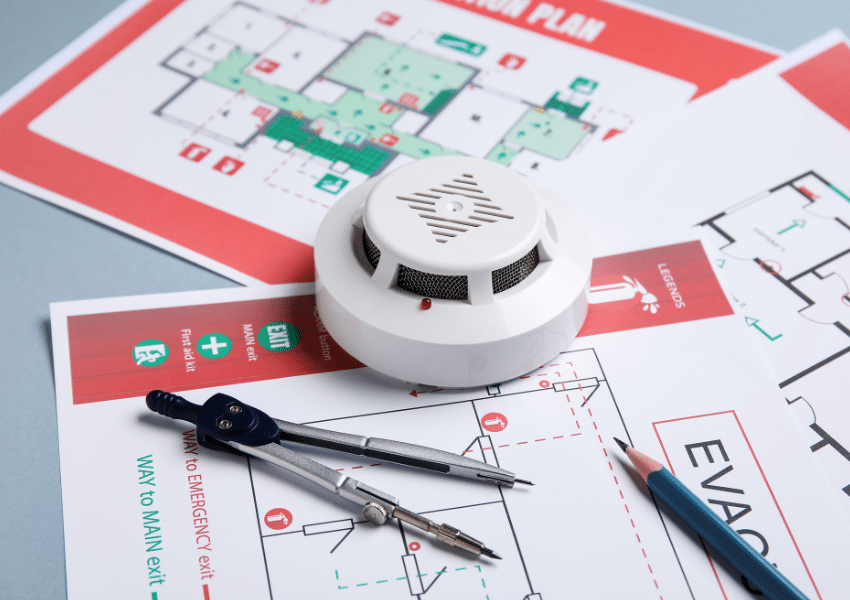
by California Casualty | Helpful Tips, Homeowners Insurance Info, Safety |
When fire breaks out, every second counts. Knowing exactly what to do—and what to avoid—can mean the difference between safety and tragedy. Whether you’re at home, at work, or out in public, understanding how to respond in a fire emergency gives you the power to act quickly, protect loved ones, and make it out safely.
Understanding the Phases of a Fire
Before you can respond effectively, it helps to understand how a fire behaves. Fires move through distinct phases, though the timing can vary depending on what is burning and where the fire occurs:
- Incipient Phase – This is the very beginning, when the fire first ignites. If detected quickly, it may still be possible to put it out safely with the right tools.
- Growth Phase – Flames spread, heat builds rapidly, and conditions begin to change. This is when a small fire can suddenly get out of control.
- Fully Developed Phase – At its peak intensity, a fire consumes all available fuel, producing thick smoke and toxic gases. Escape is the only safe option.
- Decay Phase – As the fire runs out of fuel, flames and heat decrease, but smoke and gases can still be dangerous.
What to Do in a Fire Emergency
When you encounter fire, your actions need to be quick, calm, and deliberate. Here are the key “Do’s” to remember:
1. Act Early if It’s Safe
If you catch the fire in its earliest stage (the incipient phase), and you have the right type of extinguisher, you may be able to stop it from spreading. Always aim the extinguisher at the base of the flames, not the middle or top.
In the kitchen:
- Turn off the heat source.
- Smother small stovetop flames with a metal lid, baking sheet, or fire blanket.
- Use baking soda or salt on grease fires—but never water or flour.
- Follow these tips for other ways to put out a fire.
- If a fire starts inside your oven or microwave, keep the door closed. The lack of oxygen will usually cause the fire to die down.
If the fire is spreading quickly, do not try to fight it. Get out immediately and call 911.
2. Get to Safety
Plan for at least two exits from every room in your home. Fires often make the most obvious path unusable. Heavy smoke can quickly disorient you, so it helps to know the layout of your home by memory. Practice fire drills with your family so that everyone knows how to react without hesitation.
3. Stay Low
Smoke rises and carries carbon monoxide, which can make you dizzy or even cause unconsciousness. Crawling low to the ground gives you cleaner air to breathe and increases your chance of escape.
4. Stop, Drop, and Roll
If your clothing catches fire, don’t run. Running only fuels the flames. Instead, stop, drop to the ground, and roll back and forth while covering your face. This smothers the flames and helps prevent serious injury.
5. If You’re Trapped
Sometimes escape isn’t possible. If you can’t get out:
- Stay away from doors that are hot to the touch.
- Block smoke by placing wet towels or blankets along the bottom of doors.
- Open windows cautiously, crouching down to avoid rising smoke and heat.
- Signal for help by waving a flashlight or cloth out the window.
What NOT to Do in a Fire Emergency
Just as important as knowing what to do is knowing what not to do. Certain instinctive reactions can actually make things worse:
- Don’t use elevators. Fires can cause electrical failures or trap you inside. Always use the stairs.
- Don’t pour water on grease fires. Water splashes burning oil and creates explosive steam.
- Don’t pour flour on a fire. Flour is combustible. Stick with baking soda, salt, or a fire extinguisher.
- Don’t use water on electrical fires. Water conducts electricity and can cause electrocution.
- Don’t fan flames. Adding oxygen only makes a fire grow.
- Don’t stand too close or reach over flames. Loose clothing can ignite quickly.
- Don’t move burning objects. This can spread flames to new areas.
- Don’t aim a fire extinguisher at the flames themselves. Remember: always target the base of the fire.
Preparing Before a Fire Happens
While these tips can help in the moment, preparation is your best defense. Here’s how to protect yourself and your loved ones:
- Install smoke alarms on every level of your home, especially near bedrooms. Test smoke detectors monthly and replace batteries at least once a year.
- Create and practice a fire escape plan with your household. Make sure every member—children included—knows how to get out and where to meet once outside.
- Keep fire extinguishers accessible. Place them in the kitchen, garage, and near exits. Learn how to use them before an emergency arises.
- Understand the common causes of fires so you can take steps to fireproof your home and minimize these risks.
- Know your insurance coverage. Even when you do everything right, fires happen. Having the right coverage can make the recovery process easier and less stressful.
This article is furnished by California Casualty, providing auto and home insurance to educators, law enforcement officers, firefighters, and nurses. Get a quote at 1.866.704.8614 or www.calcas.com.
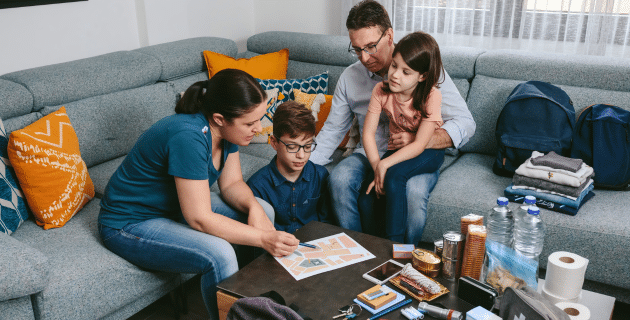
by California Casualty | Homeowners Insurance Info, Safety |
An earthquake, flood, fire, or severe storm can strike at any time — and you and your family may not be together when it does.
How will you find each other if separated? What about household members who have medical conditions? And what if your cell phones or networks are out of power?
Crafting an emergency plan before a disaster hits gives you time to discuss your family’s needs and circumstances, review possible scenarios, and decide on the best options together. Schedule a time when the whole family can participate. You may need one or two additional meetings to finalize all the details.
Here’s what you’ll need to cover:
1. Make A Plan of Action
Smart planning entails talking through a number of situations and “what-ifs.” Start by brainstorming around the following (and remember that coronavirus may affect some answers).
- What natural disasters are we most likely to experience?
- How will we receive emergency alerts and warnings?
- What are the escape or evacuation routes from our house?
- What is our shelter plan?
2. If Your Family is Separated
Re-opening across the country means parents may be going back to work and kids back to school. Are there other locations, such as after-school programs, childcare, gyms or volunteer sites that family members regularly attend? Consider those when answering the following:
- If separated during an emergency, where should we meet near our home?
- If meeting near home is impossible for some or all family members, what’s our meeting place?
- If we are separated, who is our emergency contact outside of our immediate area?
3. Specific Needs of Family Members
Remember to tailor your plan to address any particular needs of/by family members, such as:
- Medical needs including prescriptions and equipment
- Dietary needs
- Medical conditions, disabilities or functional needs, especially those requiring devices and equipment
- Language barriers or limitations
- Ages of all household members, including school-aged children
- Pets or service animals
- Religious and cultural considerations
5. Fill Out the Plan
After discussing the above, it’s time to get it all down on paper. Be sure to capture the following as well.
- All the contact information for each household member.
- Who’s responsible for what during the disaster? Tasks might include things like retrieving the disaster kit, evacuating pets, and fielding disaster updates and alerts.
- Create a personal network of friends, family or neighbors for things you might need help with.
- Make sure you have one or more out-of-town contacts for emergencies.
- Numbers for important contacts such as utilities, financial companies, childcare and caregivers, veterinarians, and insurance companies.
6. Share & Practice
During an emergency, cellular networks and wi-fi may be unreliable, and computers and phones may be lost or out of power. In these cases, having a paper copy of your family disaster plan can save precious time, minimize stress and prevent unnecessary emergencies. So, make sure each family member has a copy and carries it with them in a purse, backpack or work bag (here’s a template plan that fits in your wallet). Have regular family meetings to review the plan and practice. Finally, do a thorough review every 6 months or so, to update information or responsibilities.
7. Resources
Check out these resources to get your plan disaster-ready.
The perfect time to make a plan is right now. Getting all your family members on board and in the know sooner rather than later will ensure that you’re all ready when you need to be.
This article is furnished by California Casualty, providing auto and home insurance to educators, law enforcement officers, firefighters, and nurses. Get a quote at 1.866.704.8614 or www.calcas.com.
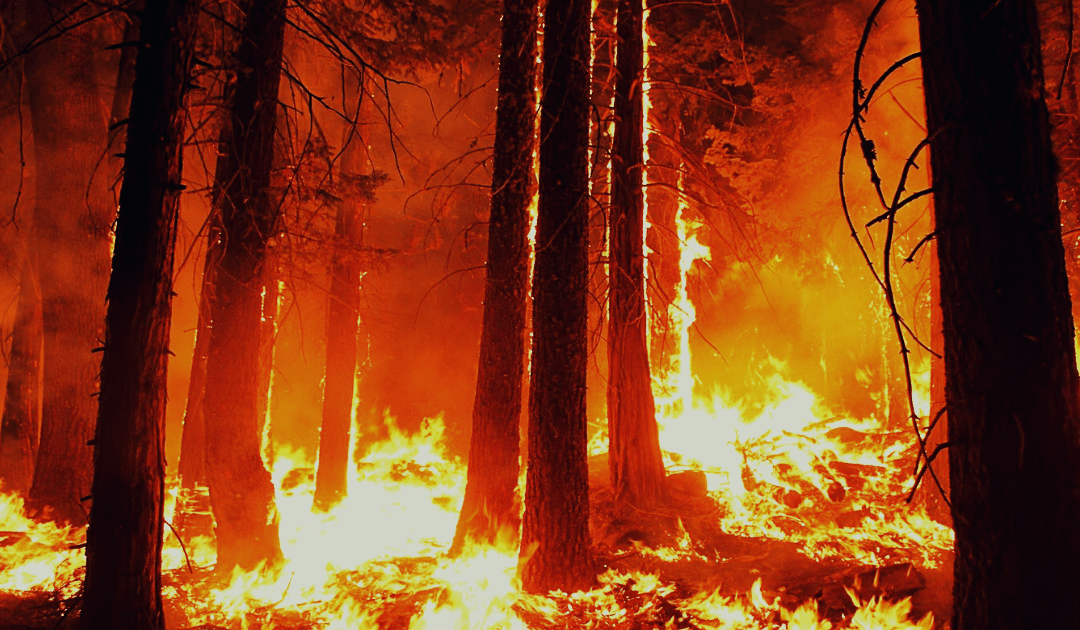
by California Casualty | Health, Safety |
Emergency preparedness will help you and your family stay safe in the event of a disaster. House fires, flash flooding, and natural disasters can happen anywhere at any time, and as we move into summer- hurricane and wildfire season, the risk for an emergency is even greater.
Coronavirus (COVID-19) has completely changed the way we interact with others- and will for the foreseeable future. That’s why it’s important to take action now to make sure you and your family are prepared for an emergency situation, while still taking the proper precautions to avoid COVID-19.
Here’s how to be prepared for an emergency during the middle of a pandemic.
Make a Preparedness Kit
Emergency Preparedness Kits are kits built for you and your family to have in the event of a disaster. These kits include all essential items that you would need to survive i.e. bottled water, toilet paper, copies of important documents, medication, food, chargers, hygiene items, etc.
The Red Cross recommends that during COVID-19, you should assemble two different emergency kits for you and your family.
Stay-At-Home Kit- This kit should include 2 weeks of emergency supplies. In the event that you or your family are exposed to the virus and you have to self-quarantine you should have everything that you would need to survive for 2 weeks without leaving your home.
Evacuation Kit- This kit should include 3 days of supplies in a “go bag”. It should hold all of your basic needs, yet be lightweight and easy to grab/carry in the event of an emergency evacuation. It is recommended that you have enough supplies for 72 hours. This also includes supplies for your health and safety in large crowds i.e. face masks, sanitizer, alcohol wipes, etc.
The Red Cross also recommends that each kit should have a 1 month supply of prescription medication along with fever-reducing medicine and cough suppressants.
Other Disaster Planning Tips
Making a disaster plan during a pandemic requires planning ahead, because of the need for social distancing. In the event of a natural disaster, sheltering in large buildings like school gyms and community centers may no longer be an option, and you will have to seek shelter elsewhere.
Here are some tips, the Red Cross recommends, to help you and your family develop a disaster plan.
-
- Register for emergency alerts
- Stay up-to-date on COVID-19 advice and restrictions for your state
- Have an evacuation transportation plan
- Have a safe destination set for your family to meet, if you become separated
- Research open lodging (campgrounds, hotels, shelters) and their restrictions, in the event of an evacuation
- Keep enough PPE, disinfectant, and medicine in your emergency kit for your family
- Do not stay with friends or family who have been exposed to COVID-19, are experiencing symptoms, or are at a higher risk of developing the virus
- If you think you have COVID-19 or have been exposed- self-quarantine, keep your distance (if possible), and contact your doctor as soon as you are safe and able.
For more tips click here.
This article is furnished by California Casualty, providing auto and home insurance to educators, law enforcement officers, firefighters, and nurses. Get a quote at 1.866.704.8614 or www.calcas.com.
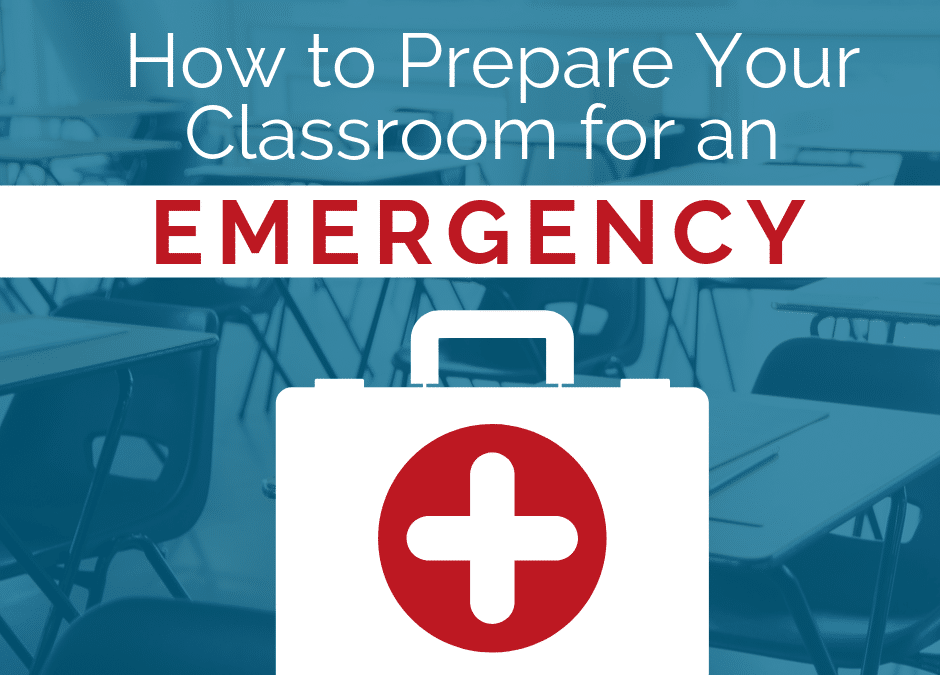
by California Casualty | Educators |
Our Education Blogger is a public school teacher with over a decade of experience. She’s an active NEA member and enjoys writing about her experiences in the classroom.
Emergency situations can happen any place and at any time, that is why it is important to prepare your classroom for any type of emergency.
1. Know Your School Emergency Procedures
Be aware of your building’s emergency procedures, how often drills are practiced, and the expectations of teachers and students during such drills. Your building should have protocols in place in the event of a fire, tornado (in certain regions), earthquake (in certain regions), intruder, and medical emergencies. Take time each month to review procedures with students and go over lockdown/evacuation routes and guidelines.
2. Learn where Medical Equipment is Located
Does your building have an AED (Automated External Defibrillator)? All fifty states have laws or regulations requiring that AEDs be available in public gathering places, and in some states this means schools must keep and maintain AEDs. Find out where the AED is located in your building. If you haven’t been trained on how to use it, ask your administrator to arrange a time when staff can be shown how to use it. If your building doesn’t have one, contact your administrator or school board.
3. Keep an Updated Class Roster With Important Information
Check your class lists to identify students with medical conditions. If necessary, talk with your school nurse about what to do for these students in emergencies. For more serious conditions, have a plan in place with the office and nurse if a serious medical event occurs. In most situations, students with serious medical issues will have some sort of individual health plan (IHP) on file for your reference. If a student who has an ongoing medical condition does not have an IHP, contact your building nurse who can get the process going if the family requests it.
4. Ask Your School to Invest in Emergency Staff Training
If you haven’t been trained in first aid, CPR, or other important emergency procedures recently, ask your administrator or nurse to arrange regularly scheduled training for staff.
5. Emergency Supplies You Should Keep In Your Classroom
These classroom emergency supplies should be stored in the classroom in the event of a shelter-in-place situation due to an emergency or lockdown. If your school does not furnish emergency supplies, ask your building’s parent-teacher organization, a local Boy or Girl Scout troop, or even an area church, for assistance obtaining supplies.
-
- bucket (can be used to store items, can also be used as an emergency restroom)
- tissues and toilet paper
- baby wipes
- disinfecting wipes
- blankets or large towels
- flashlight and batteries
- hard candies
- first aid kit with medical gloves and instruction manual
- folder marked “confidential” with:
-
-
- class list with student pictures
- student emergency contact information
- list of students with special needs and description of needs (i.e. medical issues, prescription medicines, dietary needs)
- list of school emergency procedures
- plastic bags or sheeting
- work gloves
- duct tape
- masks
- whistle
- can opener
- food
- water (pouches or small bottles)
- activities for students (cards, inflatable ball, travel games)
These items should mirror the items you have in your family’s emergency preparedness kit.
6. Create a Classroom “Go Bag”
If your school doesn’t provide one, create a classroom “Go Bag” with necessities. An old backpack works well. Place or hang it near your classroom emergency exit. The bag is meant as a portable supply kit if a building evacuation is necessary. Recommended items include:
-
- water pouches or small water bottles
- first aid kit
- whistle
- baby wipes
- disinfecting wipes
- tissues or toilet paper
- paper, markers, pencils
- flashlight and batteries
- list of school emergency procedures
- activities for students (cards, inflatable ball, travel games)
- folder marked “confidential” with:
- class list with student pictures
- student emergency contact information
- list of students with special needs and description of needs (i.e. medical issues, prescription medicines, dietary needs)
Be sure to update your supply kits and bags yearly. Replace any expired items and be sure each kit is properly stocked and stored.
Are you prepared for an emergency at school? What emergency preparedness advice would you give fellow educators? Leave your thoughts in the comment section!
This article is furnished by California Casualty, providing auto and home insurance to educators, law enforcement officers, firefighters, and nurses. Get a quote at 1.866.704.8614 or www.calcas.com.
by California Casualty | Safety |
As Hurricane Sandy whirls her way ashore–teaming up with winter storm conditions and a full moon as she does so–it’s becoming more and more clear that this storm has the potential to be extremely dangerous and damaging to communities all along the East Coast.
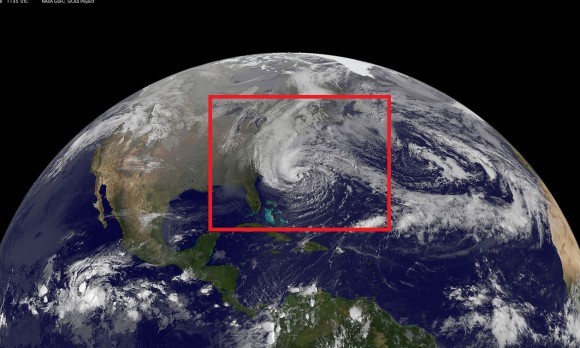
Late last week, we posted tips on how to prepare your family, self, and home for Hurricanes and Winter Storm conditions. To access that information–including checklists, preparation plans and pet and business info–click here.
As Sandy begins to make landfall, we want to make sure all those affected know where to get up-to-date, reliable information regarding evacuations, weather updates, and other emergency information.
Here are some emergency resources:
- This Google Crisis Map tracks Sandy’s progress, providing forecast tracks, current locations and active emergency shelter locations. Access the map here: Google Crisis Map.
- For the latest updates on Hurricane Sandy from the National Hurricane Center, click here.
- For a map of the latest warnings and advisories from the National Hurricane Center, click here.
- For state-specific information, click on YOUR state below:
- CT
- DE
- MA
- MD
- ME
- NC
- NH
- NJ
- NY
- New York City
- PA
- VA
- VT
- If you lose power or Internet signal and need to access Twitter to get Emergency Information, click here for tips on how to do so with your phone. For the Huffington Post’s suggestions on the Best Storm Tracker Apps, click here. We recommend following @FEMA to stay informed.
- It can be difficult to stay in touch with or reach family members during an emergency. The American Red Cross Safe and Well website allows you to register your current status or check on the status of your loved ones.
- To download the Free FEMA app for disaster safety tips, emergency meeting location information and a map of open shelters, click here.
As Sandy makes her way onto land, all those affected are in our thoughts. Please be smart and safe.





